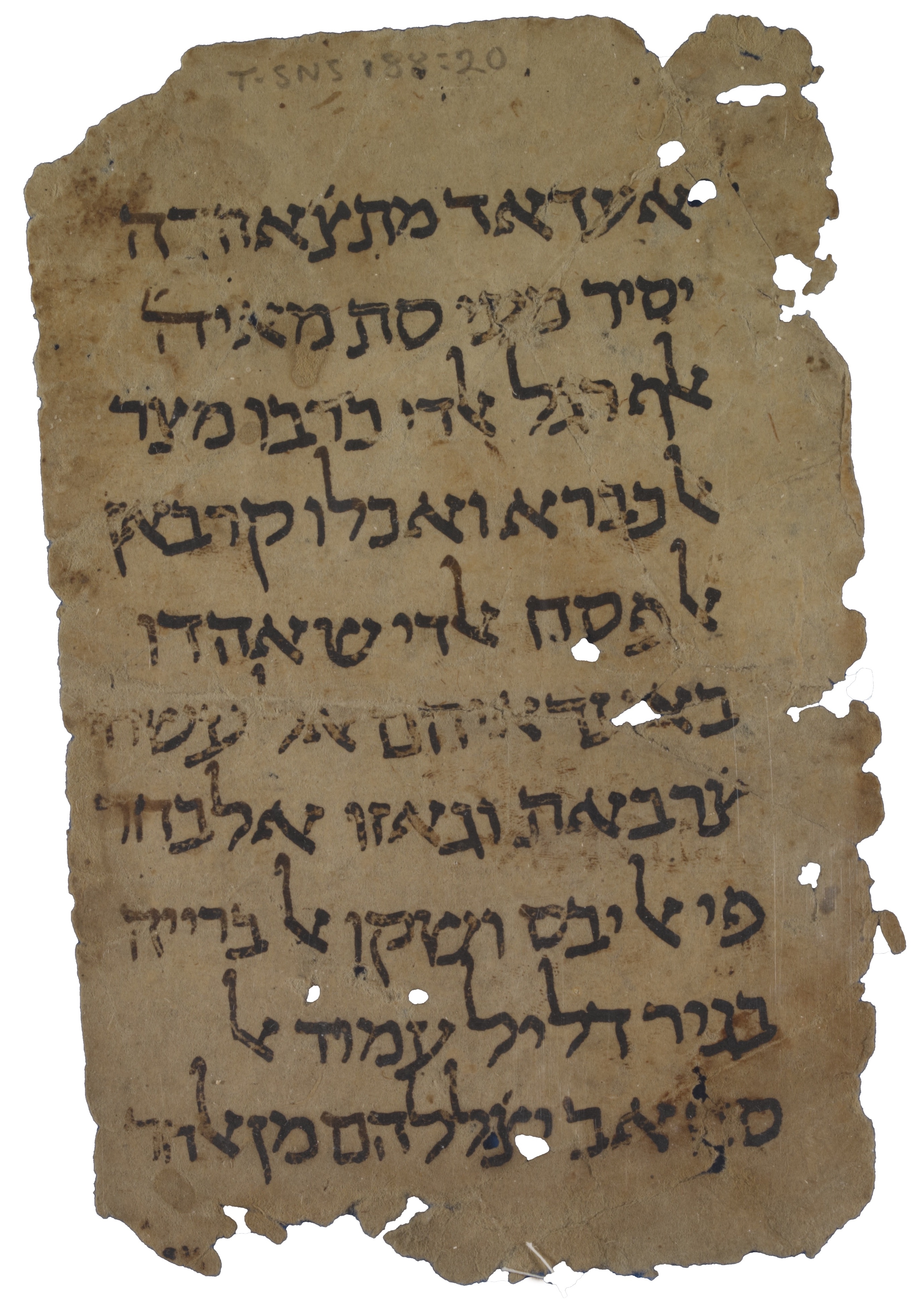Throwback Thursday: A Samaritan discovery

T-S NS 188.20 (verso): a Samaritan legend in Judaeo-Arabic discovered by Dr Friedrich Niessen, of the T-S Unit
Thu 9 Sep 2021
Our Throwback Thursday this week is taken from issue 40 of the printed edition of Genizah Fragments, published in October 2000, by our late colleague Friedrich Niessen:
A passage in II Samuel 10:15–19 deals with David’s campaign against the Aramean king, Hadadezer, and Shovakh, the commander of his army. This is the only context in which the name Shovakh appears in the Bible in such a form. A different person with the same name occurs in a traditional Jewish legend, which relates that after the conquest of Palestine, Joshua was forced to go to war with Shovakh, the king of Armenia, who united a great number of kings against him. In the name of the allied kings, Shovakh sent a messenger to Joshua with a letter informing him of his plan to wage war against him. In accepting the challenge, Joshua wrote a strong letter in response emphasizing his confidence in winning the battle. Despite a spell cast by Shovakh’s mother, which caused the enclosure of Joshua’s army within seven walls, Joshua was relieved by Novakh, the king of the Transjordanian tribes, while Shovakh was killed and his army defeated. This Shovakh legend follows traditions preserved in the Samaritan chronicles. Although most such chronicles refer to it, some offer a shorter version than others. In particular, the letters exchanged by Shovakh and Joshua demonstrate remarkable differences across the texts. The language of the Samaritan chronicles may be Arabic or Hebrew, or a mixture of both and Aramaic. There are versions of the Shovakh legend in each of these languages, preserved in a number of manuscripts housed in various libraries. Until now, no version of a Samaritan chronicle has been discovered in Judaeo-Arabic - and, indeed, one could hardly have expected to make such a discovery among the Genizah fragments. Surprisingly, however, a binder labelled “Bible: Arabic versions & commentaries” includes a leaf with the classmark T-S NS 188.20 that contains some lines in Judaeo-Arabic of Joshua’s letter to Shovakh. It begins at the point at which Joshua predicts the result of the battle: “[You will not be able to escape] to another place, but you will die here by the deadly sword, or by slaughter, or by the flame of fire, or by being wiped out. I do not boast to you as you have boasted [to me]. I do not say, as you have said: ‘Heroes will march with me.’ “The numbers are not imaginary: marching with me will be 600,000 men who destroyed Greater Egypt and ate the sacrifice of the Passover; who saw with their own eyes the ten plagues afflicting their enemies, and crossed the sea on the dry land; and travelled through the wilderness without a guide, the pillar of cloud sheltering them from the heat...” The fragment ends here, and I have found no matching piece. Although small, it represents an important contribution to the history of the Samaritan chronicles in general, and the Shovakh legend in particular. The Judaeo-Arabic version appears to be one of the oldest witnesses to the legend and throws light on some of the more obscure formulations in the Arabic or Hebrew versions. How did a Judaeo-Arabic fragment of a Samaritan chronicle end up in the Cairo Genizah? Was it by accident, or were there closer links between the Samaritan and Jewish communities than one is usually inclined to admit? In any event, the existence of this fragment, brought to Cambridge a hundred years ago, shows that the Shovakh legend was popular and widespread, apparently finding considerable interest among readers and listeners in both communities. The full text – edited, translated and annotated – will appear in the Journal of Semitic Studies in the near future.What happened next? Fred's article, "A Judaeo-Arabic fragment of a Samaritan chronicle from the Cairo Geniza", appeared in the Journal of Semitic Studies in 2002.

Add new comment